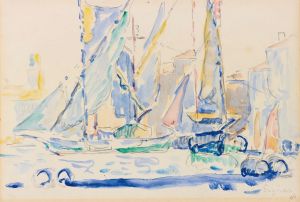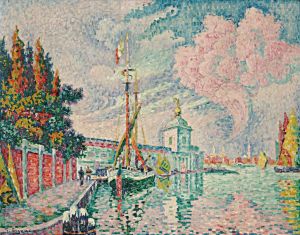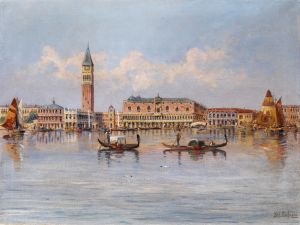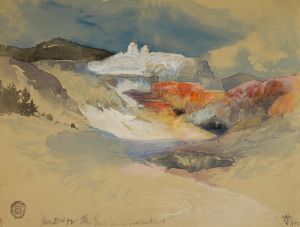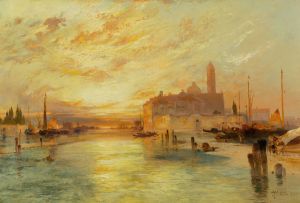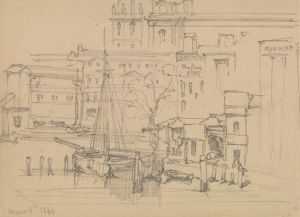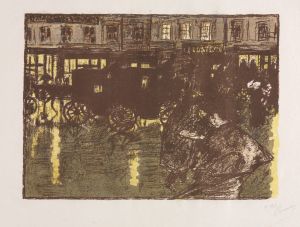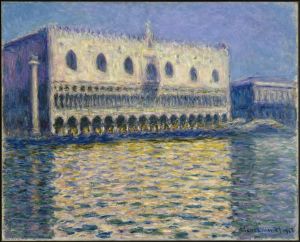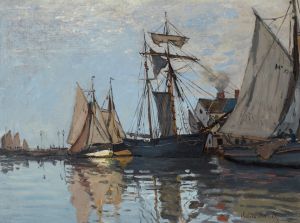
Venetian Scene
A hand-painted replica of Thomas Moran’s masterpiece Venetian Scene, meticulously crafted by professional artists to capture the true essence of the original. Each piece is created with museum-quality canvas and rare mineral pigments, carefully painted by experienced artists with delicate brushstrokes and rich, layered colors to perfectly recreate the texture of the original artwork. Unlike machine-printed reproductions, this hand-painted version brings the painting to life, infused with the artist’s emotions and skill in every stroke. Whether for personal collection or home decoration, it instantly elevates the artistic atmosphere of any space.
Thomas Moran's "Venetian Scene" is a captivating painting that reflects the artist's fascination with the interplay of light and color, as well as his ability to capture the essence of a place. Thomas Moran (1837–1926) was an American painter and printmaker of the Hudson River School in New York whose work often featured the dramatic landscapes of the American West. However, Moran also had a deep appreciation for European scenes, particularly those of Venice, Italy, which he visited during his travels.
"Venetian Scene" is one of Moran's works that showcases his interpretation of the enchanting city of Venice. While specific details about the painting's creation date or its current location might not be widely documented, it is known that Moran was inspired by the unique atmosphere of Venice, characterized by its intricate network of canals, historic architecture, and the ever-changing reflections of light on water.
Moran's technique in "Venetian Scene" likely involves his characteristic use of vivid colors and attention to detail, which he employed to convey the mood and atmosphere of the city. His ability to depict the shimmering effects of light on water and the sky is a testament to his skill as a landscape painter. This painting, like many of Moran's works, would have been created using oil paints, a medium that allowed him to achieve the rich textures and depth of color that are hallmarks of his style.
The subject matter of "Venetian Scene" would typically include iconic elements of Venice, such as gondolas gliding through the canals, the ornate facades of Venetian buildings, and perhaps the bustling activity of the city's inhabitants. Moran's depiction of Venice is not just a literal representation but an evocative portrayal that captures the romantic and timeless quality of the city.
Moran's interest in Venice and other European locales was part of a broader trend among American artists of the 19th century who sought to expand their horizons by studying the art and culture of Europe. His travels to Europe, including Venice, provided him with new perspectives and inspiration that he brought back to his American audience. Paintings like "Venetian Scene" offered viewers a glimpse into the beauty and allure of foreign lands, contributing to the broader appreciation of European art and culture in the United States.
While "Venetian Scene" may not be as widely recognized as some of Moran's other works, such as his depictions of Yellowstone and the Grand Canyon, it remains an important part of his oeuvre. It exemplifies his versatility as an artist and his ability to capture the spirit of diverse landscapes, whether they be the rugged terrains of the American West or the serene waterways of Venice.
In summary, Thomas Moran's "Venetian Scene" is a reflection of the artist's skill in capturing the essence of a place through his masterful use of color and light. It stands as a testament to his ability to transport viewers to the enchanting city of Venice, offering a visual experience that is both captivating and timeless.





